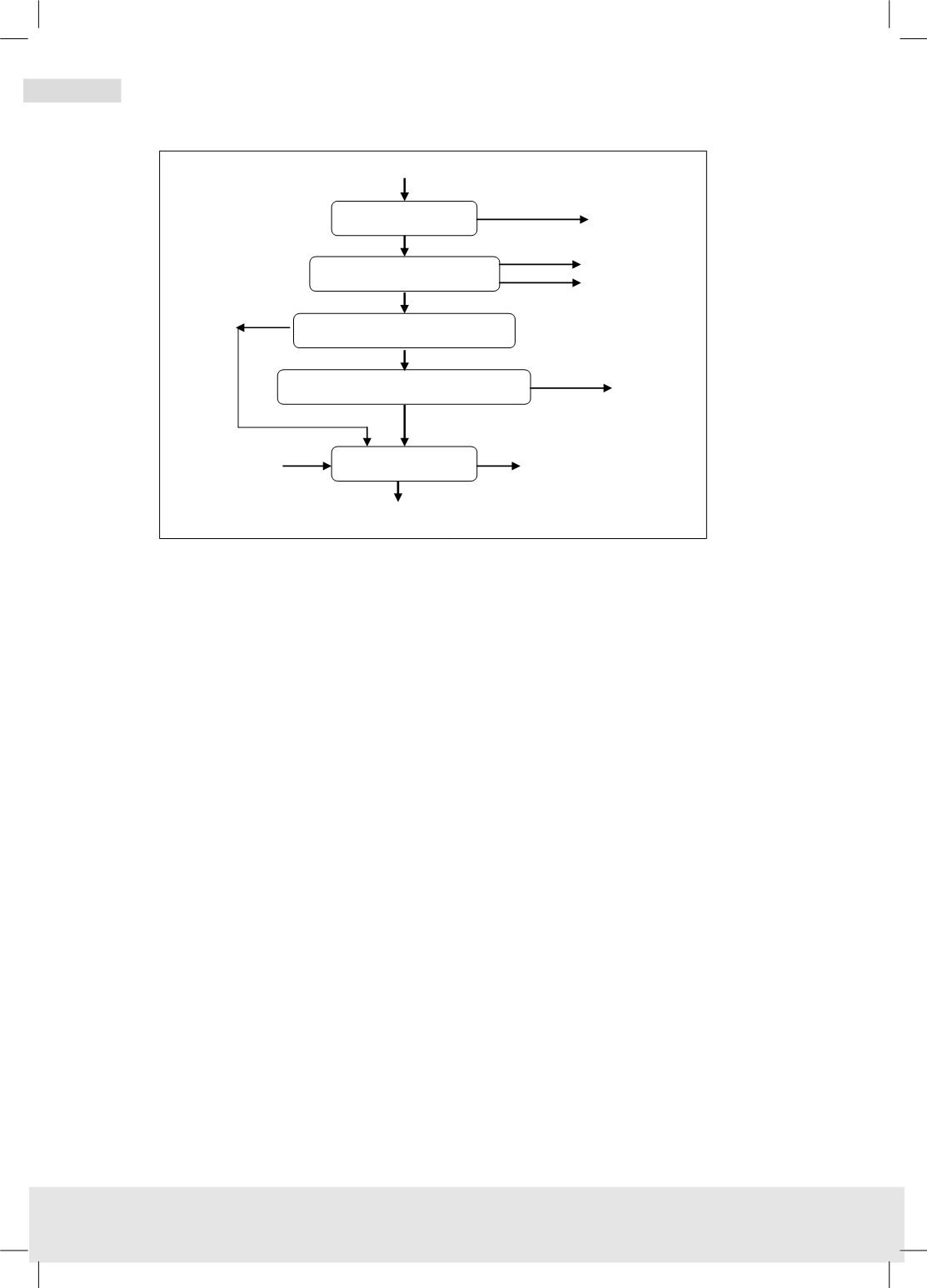

164
2016
أوابك العلمية لعام
�
ص لبحوث العلمية الفائزة بجائزة
�
عدد خا
مجلة النفط والتعاون العربي
161
العدد
- 2017
أربعون
المجلد الثالث و ال
Re-refining of Used Lubricating Oil and its Economic and Environmental Implications
41
.
Figure 23 RTI simplified block flow diagram
Source Giovana et al (2003)
4.17 SOTULUB technology
This technology was developed by Societe Tunisienne des Lubrifiants (SOTULUB). It is
based on the injection of a strong base at various stage of the process.
4.17.1 Process description
The SOTULUB process consists of the following steps:
Dewatering:
In this section, water and light hydrocarbons present in the used oil are separated by
flashing: Used oil entering the process unit is preheated in heat exchangers at about
160°C by recovering the heat of the distillates from the distillation and fractionation
columns then mixed with a small ratio of ANTIPOLL. Antipoll, an alkaline product, is
injected to the used oil under dosing rate control. The mixture is drawn into a flash
drum were water and light hydrocarbons are separated under atmospheric pressure
and then treated separately.
Gas oil stripping:
In this section, gas oil present in the dehydrated used oil is separated under vacuum.
The dehydrated oil is heated again to approximately 280°C and drawn to a stripper
Base Oil
Light
Hydrocarbons
Water
Residue
Light Base
Clay
Used Clay
Used Oil
Cyclonic Vacuum distillation
Dewatering
Flash Distillation
Vacuum Distillation
Adsorption
Water
















